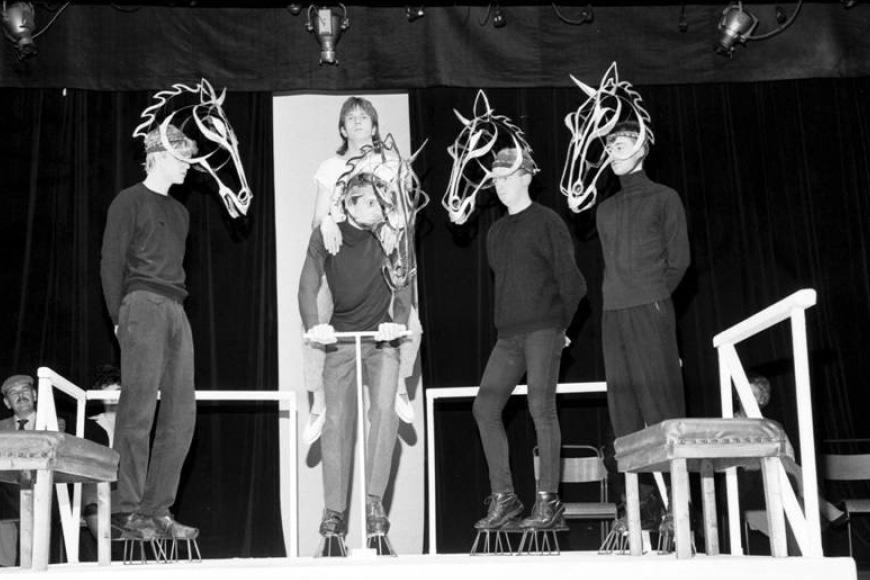The designer
Hippolyte Blanc, who designed our building, was a prolific architect and antiquarian. He was involved in high-profile restoration projects across Edinburgh - including the Argyle Tower and portcullis gate at Edinburgh Castle and John Knox House on the Royal Mile. His major works are dominated by churches in the gothic revival style, and examples can be seen all over Scotland. In Morningside alone they include Christ Church (Episcopal), Chalmers Free Church and Morningside Parish Church. So who better to design Morningside High Church?
From church to theatre
The pink sandstone building was completed in 1892, and served the parish for almost 70 years before it was united with Morningside Parish Church and the building was vacated. It lay largely unused until the Little Theatre in the Pleasance closed in the early 1960s, when the idea was raised to turn the building into a new, smaller-scale theatrical venue.
In 1962, the Corporation of the City of Edinburgh discussed the creation of a venue that would encourage the younger generation into the fields of ballet, drama, music and opera – and in 1963 it bought the former church building as a base.
The theatre formally opened on 25 September 1965 with a production of Oscar Wilde’s The Importance of Being Earnest.
Growth
The Theatre became a mainstay for local and amateur performing arts groups across the city. It is also a key venue for national and international companies and well known performers like the June Geissler School of Ballet, the Wooster Group, Alvin Ailey American Dance Theatre, 7:84 and TAG.
It established a long-running association with the American High School Theatre Festival in 1995, and in 1996 artist Kenny Munro was commissioned to create The Milestones in collaboration with local school children. Those two pillars, located in the Theatre’s driveway, celebrate the heritage of Morningside and its neighbouring areas with symbols and motif of their social and civic history.
Rejuvenation
By 2005 the Theatre was in need of some freshening up and an 18-month refurbishment place began. It incorporated all front of house areas and included the addition of a lift to the auditorium and increased café bar space.
Ten years later, to make its Golden Jubilee, the Theatre saw significant investment in refurbishing the external stonework and improving facilities behind the scenes. The project helped to ensure that the venue will still be there for many generations to come.


